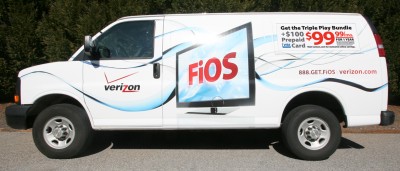It’s a question we hear often: why can’t Verizon wire more streets in Brick for its FiOS service? The answer comes down to a mix of politics, long-term plans for the company, and even the vast size of Brick’s frontage on Barnegat Bay.
First, a little history.
When Verizon was getting ready to launch its FiOS service in New Jersey, the company made a slick business play: instead of going town-by-town and getting nearly 600 individual licenses, executives approached the state government to get one license that would authorize the service everywhere in the Garden State.
|
|
FiOS offers high-speed internet access as well as a digital television service. It also provides competition to cable companies such as Comcast, leading to more competitive pricing and special offers in areas where both services are offered.
The plan for Verizon to obtain a statewide license ultimately worked, but in the process, a battle between North Jersey and South Jersey politicians effectively led to the creation of “have” and “have not” towns when it came to getting wired. North Jersey politicians wanted the most densely-populated towns to have guaranteed service. South Jersey politicians wanted to make sure the service reached all areas of the state, so they wanted to make sure each county seat got wired. In the end, both the northerly and southerly contingents got what they wanted, and Verizon is required to have both sides of the deal completed by the end of 2016.
So, what does this mean for Brick?
“They cannot come here to Brick and do a certain street or anything else until all the county seats are done entirely,” said Mayor John Ducey, who said he recently contacted Verizon directly after residents posed the question about getting more of the township wired for FiOS.
Part of Brick – a relatively small part – has access to FiOS from when Toms River’s Silverton section was wired, but the vast majority of the township can only choose from Comcast or satellite television service.
“We don’t qualify as one of the most densely populated towns,” said Ducey.
The reason? A curious manner in which population density was calculated.
“They included the entire area of the town, which actually includes a lot of Barnegat Bay since we stretch all the way to the barrier island,” Ducey said, meaning that vast swaths of waterways – obviously, uninhabited – were included, bringing down Brick’s density ratio.
Other towns are luckier, such as Lake Como, a small Monmouth County town that has far fewer residents than Brick, but a higher density ratio given its size.
“It’s a super small town, and because of that reason they’re considered densely populated,” said Ducey.
Even after the 2016 deadline passes, signs indicate it will be unlikely for the company to expand further. At the Jefferies 2014 Global Technology, Media and Telecom Conference, Verizon CFO Fran Shammo said that after the mandated cities in New Jersey and elsewhere are wired, the company plans small expansions in New York City and Texas, but will complete its buildout of FiOS with 19 million customers.
“We will continue to harvest that copper network and those customers and keep them as long as we can but we will not be building FiOS out to those areas,” Shammo said.

Advertisement
Local Business
Stop & Shop Permanently Closes Point Pleasant Beach Location










